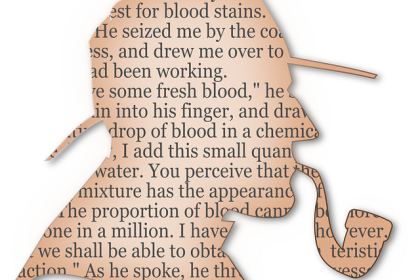
Common Problems in Crime and Mystery Writing
Detectives are everywhere these days. Crime novels are becoming increasingly popular and the trend has carried over into television with gusto. Crime fiction, which includes thrillers and mysteries, accounts for 25 to 40 percent of all fiction book sales. But why is the crime genre so popular?
There is something thrilling about reading about crime. These books describe events, like brutal murders, that could or actually have occurred. The prospect of what is possible could be what makes them compelling and frightening, which keeps readers on the edge of their seats.
But like with any other popular genre, there are a number of well-established tropes that you could want to sidestep. Here are three common problems in crime and mystery writing, and how you might avoid them.
Stereotypical Characters
If you spend any time reading crime fiction or watching detective shows, you’re familiar with the hard-boiled detective who has an alcohol dependency and social problems. That detective is likely also forced to confront their past while solving a case. Or you’re familiar with the genius murder whose thoughts are written in italics and intentionally gets caught by the police to mess with the investigation. You know these types of characters because they are used so often that they have become clichés. When writing a crime novel, it is important to develop characters without relying on stereotypes that could bore the reader. If you feel you must use a cliché when writing your characters, look for ways to subvert it.
Implausible Situations
While most readers are prepared to accept a certain amount of implausibility in their crime fiction, it can be distracting to readers if you don’t consider how realistic the situations in your novel are. If your serial killer uses chloroform on his victims, make sure you understand what chloroform does and how it works. Your readers will probably find it distracting if your serial killer uses enough chloroform to knock out a 250-pound man for hours, but the teenage girl he uses it on is only unconscious for ten minutes before coming to and having enough coordination to run away. Make sure that you understand and accurately reference the important elements so that you can avoid irritating plot holes and implausible situations.
Plot with Cause and Effect
One of the most fundamental rules of developing a narrative is cause and effect. In crime fiction, cause and effect is particularly important because each scene and detail must be justified. In other words, every aspect of the plot must have a reason to be there because the reader knows that every scene is a potential cause for an effect that comes later. If there is a gun described in a scene, the gun needs to go off at some point. If the gun never goes off, the reader might feel let down. Every scene must have a recognizable purpose, even if that purpose is to mislead the reader. Though this isn’t necessarily a cliché, it is an important aspect of good crime writing.
The important thing is to be aware of your genre. When you’re working on your crime novel, take time to research established tropes so that you can subvert them or avoid them altogether. If you’re looking for feedback on your book, check out NWA Publishing’s manuscript evaluation and content editing services.



